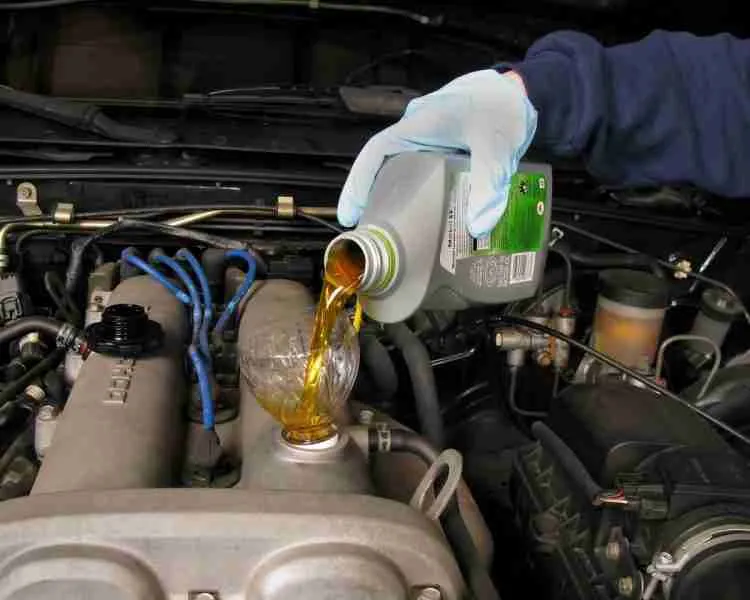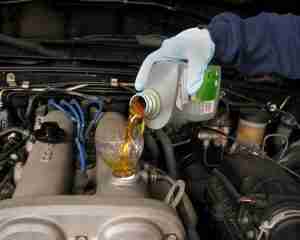Can Changing Your Transmission Fluid Cause Damage?

There are a lot of myths and legends about changing your car’s transmission fluid. But talk to any mechanic and ask the question ‘can changing transmission fluid be bad,’ and they’ll laugh at how absurd it is. This is because there is no basis for the urban legend. It causes more harm than good and you must avoid falling for it.
So why do so many people believe it? It’s more than just a lack of research. Car owners tend to put off vehicle maintenance since they are often busy with their jobs, chores, and other responsibilities. They are always more than ready to accept any story that reduces their workload, and who can blame them?
However, it is very important to note that changing your car’s transmission fluid is not something you can put off simply because you do not have the time for it. It is vital to your vehicle’s health. In fact, not changing the fluid can lead to significant damage.

The only thing that can damage your transmission is not changing it frequently enough. If you leave it in there for too long, the fluid can become dirty. Once that happens, it will stop dispersing heat effectively and lose its grip over the clutches.
Additionally, there will be a lot of wear and tear on other parts of your transmission which will come back to harm your clutches.
When the clutch packs lose their grip, the old dirty fluid will be the only thing generating friction and keeping your clutches engaged. Changing the transmission fluid at this point can cause damage.
Therefore, the only way to avoid harming your transmission and to retain control over your clutches is to change the fluid regularly. If you put it off, the damage will be irreparable and you will not be able to do anything about it.
When Should You Change Your Transmission Fluid
As we’ve talked about before in other articles, each car is different. From its manufacturer to the conditions you drive it in, there are countless variables. This means that every vehicle has its own requirements and works on its own timeline.
Therefore, we can not give you an exact time period for changing your car’s transmission fluid. However, we can give you a quick and easy way to check the fluid from time to time and figure out when you should change it on your own.
First, locate the fluid. Most cars have it under their hood in the transmission dipstick behind the oil dipstick. The container will have markings to tell you how much fluid your car should have at any particular time.
This is the first indicator. Add more fluid if it is below the marked line.
Second, figure out if you need to change the fluid completely. Get a white paper towel and make sure it is clean. Wipe the transmission dipstick on it and note the colour of the fluid. Use the following key to see your next step.
- Bright pink
If the fluid is bright pink, this is a good sign. It is clean and there is no need to change it. Close your car’s hood and go about your day.
- Light brown
Treat light brown fluid as a warning. The transmission fluid is inching towards becoming dirty and you need to flush it. Light brown fluid doesn’t cause damage however you will end up spending a lot of money in terms of car repair if you delay flushing it.
- Dark brown
If you haven’t changed your transmission fluid in a very long time, it will become dark brown. If you look carefully, you’ll even see small metal particles floating in it. This colour is an indication of transmission damage.
Visit a car mechanic so they can assess the damage and tell you what to do next. Alternatively, change the fluid and hope for the best.
Fluid Change Vs. Flush
If you’ve tested your car’s transmission fluid and it is light brown, you will want to change it. At this point you have two options: change and flush. Both will get the job done but depending on your situation, one might be more suited to the job.
Changing the fluid simply means that you have to drain the fluid in the transmission pan and refill it. By the time you’re done, there will be some percentage of the old fluid in your gearbox unit.

Flushing is a little different. It means you will remove all of the old fluid. This includes taking it out from the cooler lines and transmission crevices in addition to the pan.
Changing is better than flushing for people who haven’t maintained their transmission. This is because dirty fluid tends to have metal particles and gunk. It can get stuck in the narrow oil channels when you try to drain it out. If that happens, you’ll damage your clutch box.
However, if you always stay on top of your car’s maintenance, you can get away with flushing. You’ll get rid of all the old fluid and keep your vehicle safe from damage in the long term.
What Transmission Fluid To Use
There are hundreds of transmission fluids available in the market. Each company promotes their product as the best one and it is often quite difficult to choose one. Therefore, we recommend consulting your car’s manufacturer and using the product they endorse.
It is in their best interests to optimize their vehicle’s performance and hence will have tested a bunch of fluids with their cars to find the best one. This makes sure that not only are you using a fluid that is compatible with your transmission and won’t cause you any problems, but that you will get the best experience possible.
Wrap Up
The answer to the question ‘can changing transmission fluid be bad’ will always be a big no. You do run the risk of some damage if you flush fluid that has been ignored for a long period of time. But even in that situation, you can mitigate the potential harm by changing the fluid instead. Moreover, ignoring it even further will lead to much worse outcomes.
In short, change or flush your transmission regularly and choose to be safe rather than sorry.













No Comment